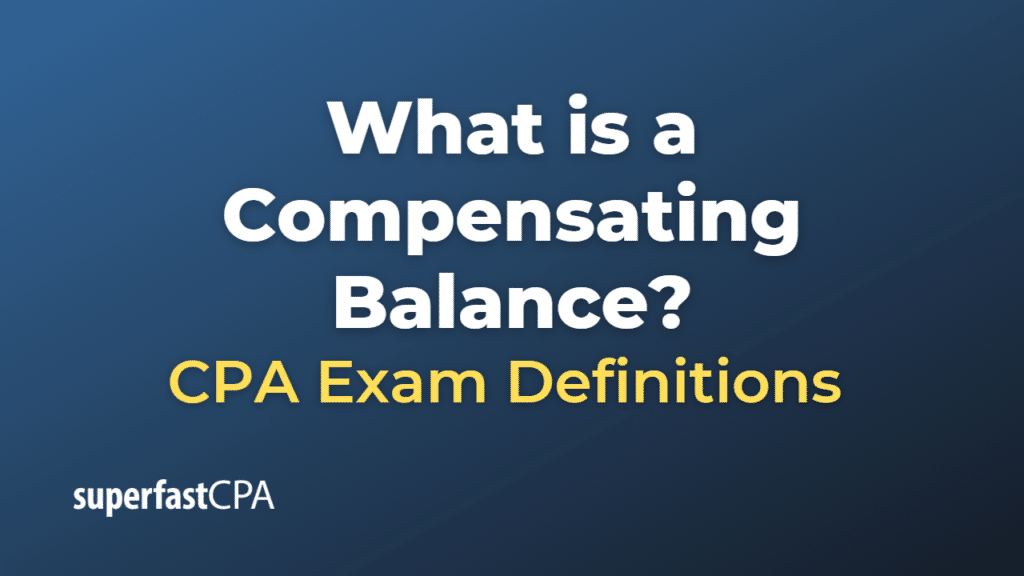Compensating Balance
A compensating balance is a minimum balance that a borrower must maintain in a bank account as a condition for obtaining a loan or line of credit from that bank. This practice is used by banks to reduce the risk associated with lending and to ensure that the borrower maintains a certain level of liquidity. The compensating balance is usually a percentage of the loan or credit line amount and is held in a non-interest-bearing or low-interest-bearing account.
The primary purpose of a compensating balance is to:
- Mitigate the bank’s credit risk: By requiring the borrower to maintain a minimum balance in their account, the bank reduces the risk of the borrower defaulting on the loan or using up their entire line of credit.
- Enhance the borrower’s liquidity: A compensating balance can encourage the borrower to maintain a certain level of cash in their account, which can help them meet their financial obligations and reduce the likelihood of default.
- Increase the bank’s profitability: Since the compensating balance is usually held in a non-interest-bearing or low-interest-bearing account, the bank can use those funds for other purposes, such as lending to other customers or investing in income-generating assets.
It’s important to note that compensating balances can effectively increase the cost of borrowing for the borrower. Since the compensating balance is held in a low or non-interest-bearing account, the borrower is unable to earn a return on those funds. Additionally, the borrower’s access to the full amount of their loan or line of credit is limited due to the minimum balance requirement.
In recent years, the use of compensating balances has declined due to increased competition among lenders, more stringent regulations, and the availability of alternative risk management tools. However, compensating balances may still be used in certain situations, especially with borrowers who have a higher credit risk or limited credit history.
Example of a Compensating Balance
Let’s consider a hypothetical example to illustrate the concept of a compensating balance.
Suppose ABC Company is seeking a loan of $100,000 from XYZ Bank. As a part of the loan agreement, the bank requires ABC Company to maintain a compensating balance of 10% of the loan amount in a non-interest-bearing account at the bank.
Here’s how the compensating balance works in this example:
- ABC Company takes out a $100,000 loan from XYZ Bank.
- According to the loan agreement, ABC Company must maintain a compensating balance of 10% of the loan amount, which is $10,000 (0.10 x $100,000).
- ABC Company deposits $10,000 into a non-interest-bearing account at XYZ Bank and is required to maintain this balance throughout the loan term.
- Effectively, ABC Company has access to only $90,000 of the loan amount ($100,000 – $10,000) for their business operations, since $10,000 must be kept in the account as a compensating balance.
- The compensating balance effectively increases the cost of borrowing for ABC Company, as they are unable to earn interest or use the $10,000 for their business needs.
In this example, the compensating balance serves as a risk mitigation tool for XYZ Bank, ensuring that ABC Company maintains a certain level of liquidity. At the same time, it increases the borrowing cost for ABC Company, as the company has limited access to the full loan amount and cannot earn interest on the compensating balance.












